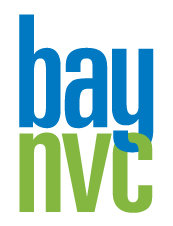by Miki Kashtan
Part 1 of this mini-series was posted on April 24.
Bringing Our Authenticity into the Workplace
In the workplace, as in the home and elsewhere, many people forget about including themselves when it comes to connection. I have already written (April 16) about how leaving ourselves out can lead to resentment. How does this apply in the workplace?
Including yourself means bringing your opinions and visions when you have them, even when there may be disagreement. It also means being willing to say no when you are being asked for something that will not work for you. In addition, if you really want to bring yourself fully into the picture, you will need to learn to ask for what you want.
Discussing Disagreements
Many people are used to hiding their opinions when they are not aligned with the general flow of things. Others argue for them forcefully, to the point of expressing disrespect for others’ opinions. Rarely have I seen the capacity to express divergent opinions and lead a productive discussion about them. What can help?
As an example (loosely based on a real situation I am now working with in a company I am supporting), suppose a new person comes into your department whom you completely dislike and don’t think is a fit for the position. Maybe everyone else in the department is happy with the hire, and one co-worker expresses relief that now you have extra support. What do you do? You could pretend to agree when you don’t. For most people, that creates a level of distance and alienation which can destroy goodwill. You can express your different opinion like this: “I can’t believe you appreciate this new person. He/she is just a lump, totally inept. I don’t know why he/she was hired.” (Remember – this is based on a true story…) You are likely to lose your co-worker’s trust, and in some situations and workplaces word will get around and you may lose your job. When given these two alternatives, most people choose the former, which in part explains why so many of us are unhappy going to work.
A third alternative does exist, though. You can express your disagreement by taking ownership of your response instead of making it sound like a fact with which anyone would have to agree. You could say, for example: “I wish I shared your opinion. I am actually quite concerned. I am worried I and others may not be able to get our work done as efficiently. Do you want to hear more?” In addition to recognizing that this is your opinion and not “the Truth,” you are also expressing what’s under your opinion by linking it to a shared goal or value, in this case efficiency. Lastly, you are also expressing openness to dialogue. During the dialogue you can continue to bring empathic listening and caring authenticity to the conversation. Make your goal be mutual understanding rather than agreement. This is not about “agree to disagree.” When you work towards mutual understanding you will often be surprised by how much you can learn and change along the way.
Saying “No” Respectfully
Whenever anyone makes a request of you, whether at work or elsewhere, the request is made on two levels. One is the content: the person making the request wants something to happen, and s/he has chosen you as the strategy of choice. The second level is about the quality of relationship between you. We all want to know that we matter. That includes everyone who makes a request of you, including your boss.
What this means is that if you are going to say no to someone, it’s vitally important that you express care even as you say no. That means developing your inner muscles so that you can care. And then finding ways of expressing the care. How?
You start by explicitly expressing an understanding of and interest in how what’s being asked of you is important to this other person and/or to the organization. You follow by stating clearly what’s keeping you from saying yes, and you finish by working together with the other person to find alternate strategies to address the underlying need.
(To be continued again. Part 3 will address asking for what you want. I plan to return to the topic of workplace relationships in the future to address power differences and working with groups)
Sunday, May 2, 2010
Subscribe to:
Comments (Atom)

